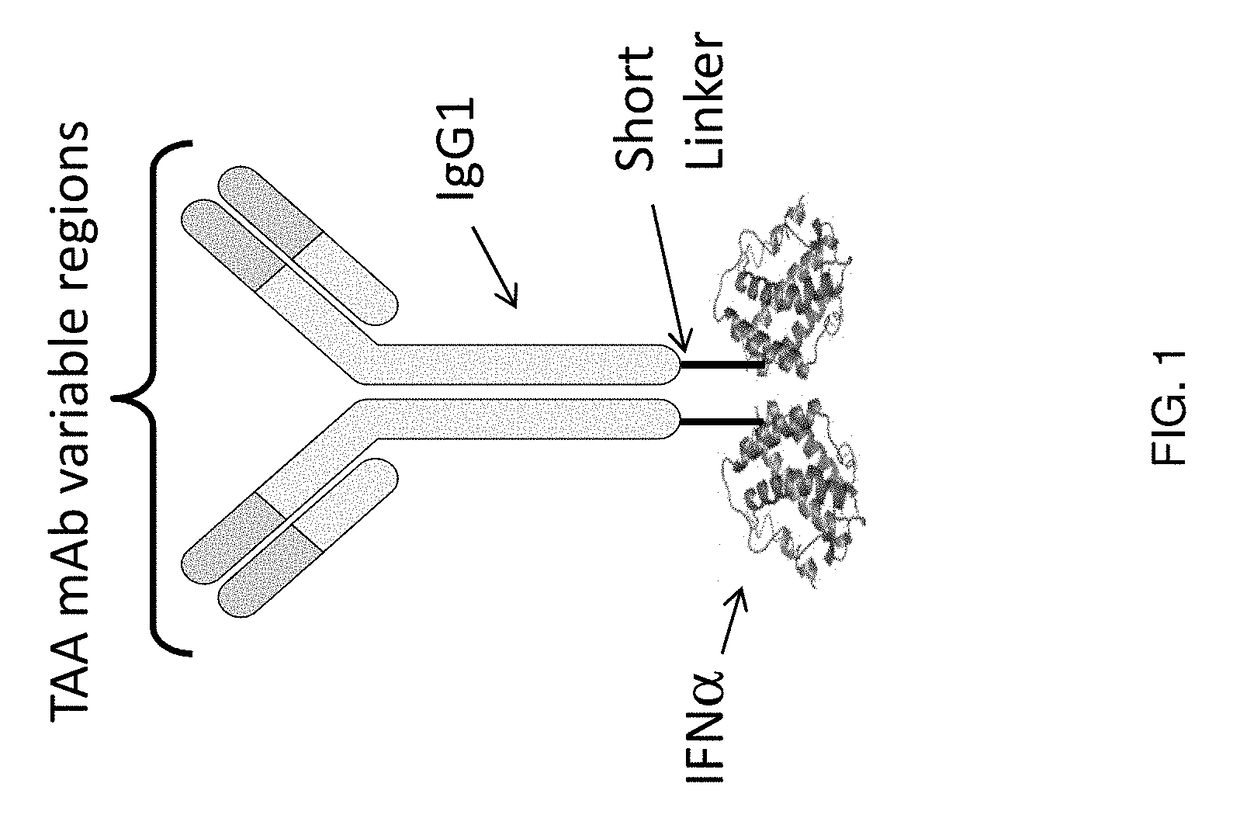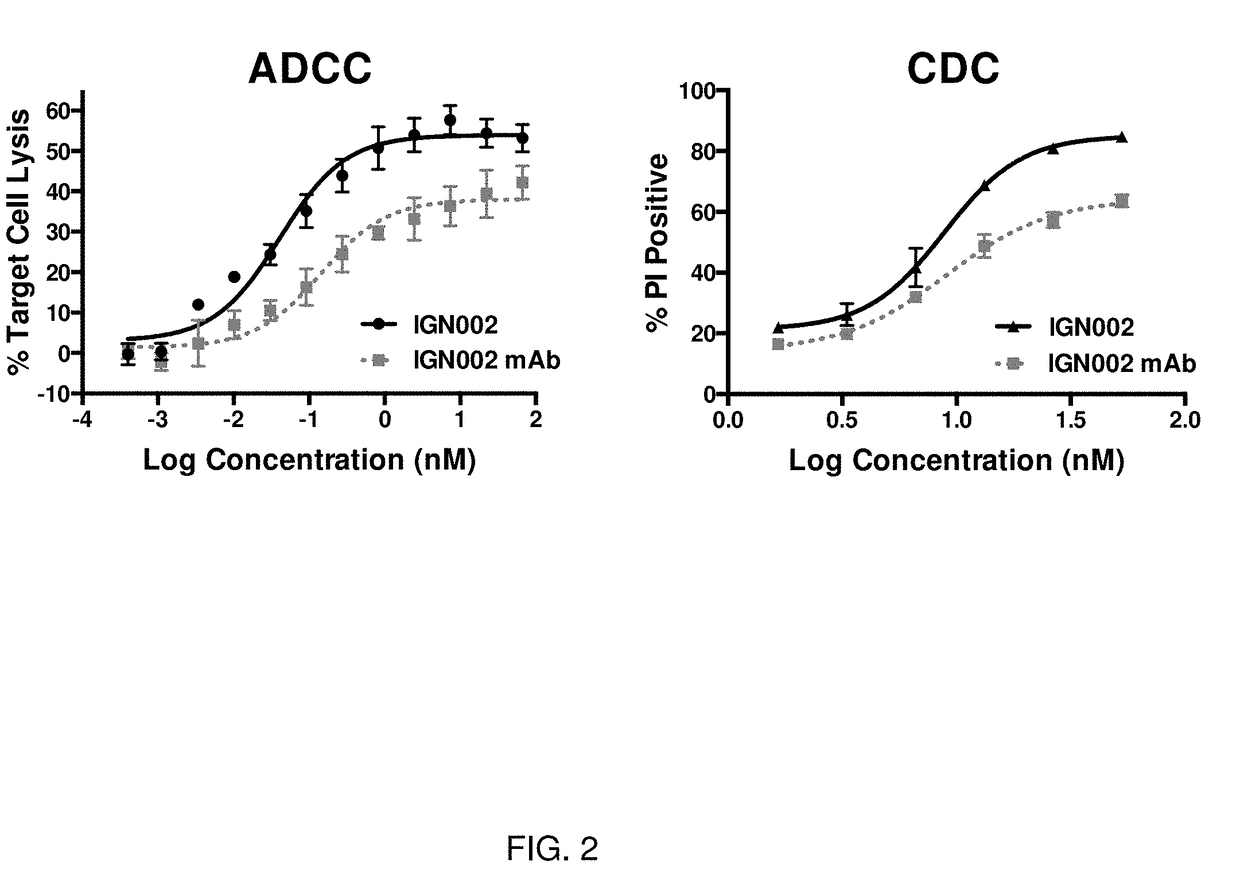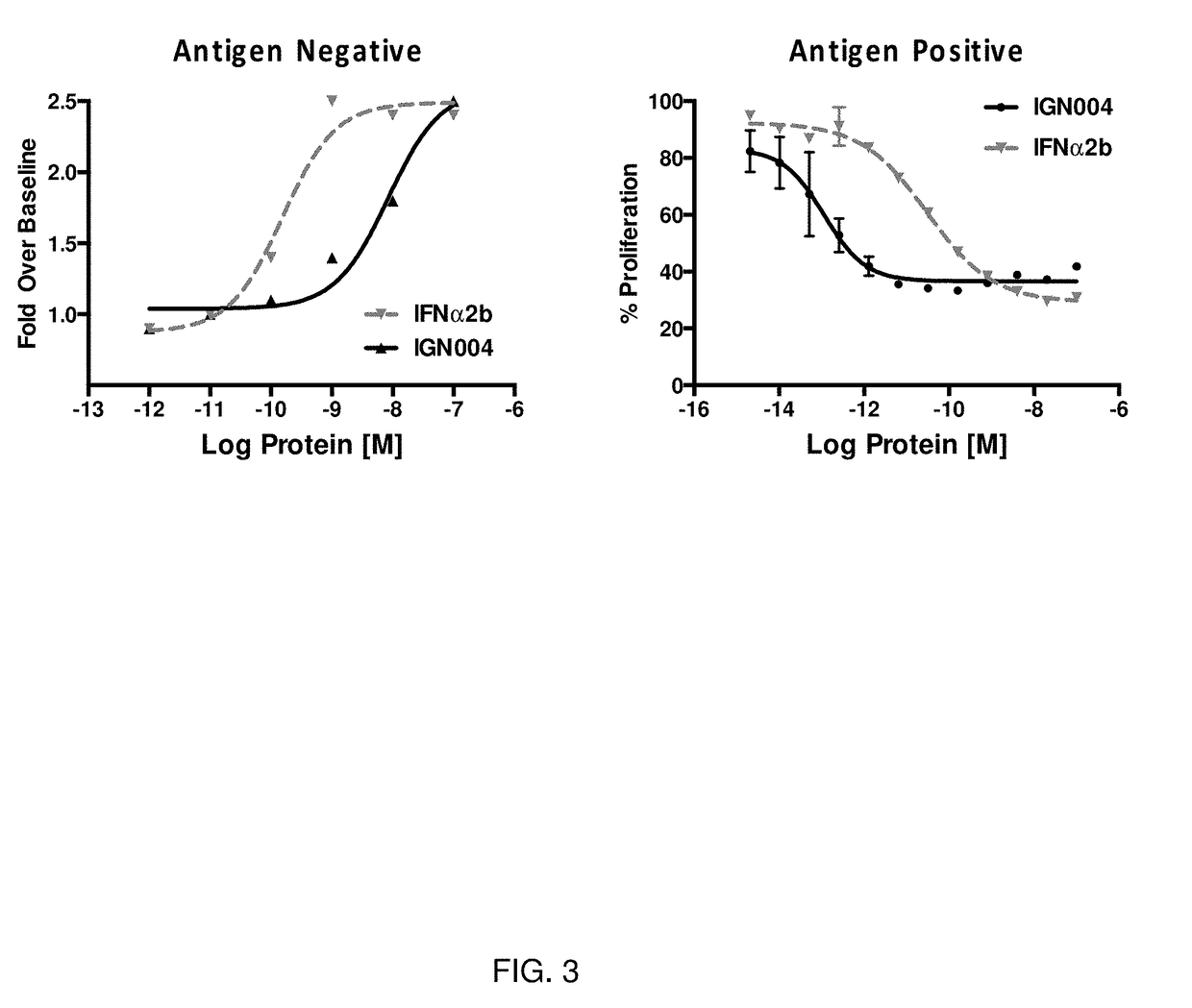Focused interferon immunotherapy for treatment of cancer
- Summary
- Abstract
- Description
- Claims
- Application Information
AI Technical Summary
Benefits of technology
Problems solved by technology
Method used
Image
Examples
example 1
[0250]The present inventors previously reported that a recombinant anti-CD20 Ab-wt IFN-α2b fusion molecule (hereinafter referred to as “IGN002”) prepared as described herein demonstrated superior anti-lymphoma activity against numerous cell lines in vitro and against established human xenograft tumors grown in mice (Xuan et al., Blood 115: 2864-71, 2010; Timmerman J et al, Blood 126(23): 2762, 2015). Specifically, in nonclinical studies, IGN002 selectively bound to CD20-positive cells and exhibited potent anti-proliferative activity in vitro against CD20-positive NHL cell lines (EC50 values of 0.1-2.1 pM) relative to each of the fusion partners alone. IGN002 also demonstrated enhanced cytokine-dependent cytotoxicity (CDC) and antibody-dependent cell-mediated cytotoxicity (ADCC) activity against NHL cells, compared to rituximab, and exhibited potent pro-apoptotic activity against NHL cell lines (EC50 values of 1.9 pM-2.7 nM)(see FIG. 2). Notably, antiviral activity was reduced by 270...
example 2
[0252]In this example, using the methods described herein, a TAA Ab-IFN fusion molecule comprising an anti-GRP94 antibody having the amino acid sequence set forth in SEQ ID NO: 12 and a light chain having the amino acid sequence set forth in SEQ ID NO: 13 was prepared as follows: an interferon molecule having the amino acid sequence set forth in SEQ ID NO: 1 was attached to the C-terminus of the anti-GRP94 Ab heavy chain using a linker having the amino acid sequence of SEQ ID NO: 18 (this fusion hereinafter referred to as “IGN004”).
[0253]The expression of GRP94 on various solid tumor and hematological cancer cell lines was assessed by flow cytometry. Cells were incubated with anti-GRP94 Ab at 2 μg per 106 cells for 1 hour on ice. After incubation, cells were washed twice then bound mAb was detected with anti-human IgG(Fc)-FITC Ab. Samples were analyzed by flow cytometry using a Beckman Coulter Cytomics FC500 or Galios flow cytometer instrument and data analyzed using WinMDI software...
example 3
[0256]In this example, the STAT1 phosphorylation and proliferation inhibition activities of IGN004 were compared to non-fused IFN-α2b in a non-targeted and a targeted setting, respectively.
[0257]For the non-targeted STAT1 phosphorylation experiment, Daudi NHL tumor cells (GRP94-negative) were incubated with the indicated concentration of IGN004 or IFN-α2b for 15 minutes, then cells were fixed, permeabilized and intracellularly stained with PE-labeled anti-STAT1 (pY701) or PE-labeled isotype control. After washing, samples were analyzed by flow cytometry. Dose response curves were generated by non-linear regression analysis using Prism software. For the targeted proliferation inhibition experiment, GRP94-positive NCI-H1299 NSCLC tumor cells (ATCC CRL-5803) were treated with the indicated concentration of IGN0004 or IFN-α2b for 96 hours at 37° C. in a 5% CO2 atmosphere. After incubation, standard MTS assay (Promega Cell Titer96; Promega, Madison, Wis.) was performed to assess cellular...
PUM
| Property | Measurement | Unit |
|---|---|---|
| Dimensionless property | aaaaa | aaaaa |
| Dimensionless property | aaaaa | aaaaa |
| Dimensionless property | aaaaa | aaaaa |
Abstract
Description
Claims
Application Information
 Login to view more
Login to view more - R&D Engineer
- R&D Manager
- IP Professional
- Industry Leading Data Capabilities
- Powerful AI technology
- Patent DNA Extraction
Browse by: Latest US Patents, China's latest patents, Technical Efficacy Thesaurus, Application Domain, Technology Topic.
© 2024 PatSnap. All rights reserved.Legal|Privacy policy|Modern Slavery Act Transparency Statement|Sitemap



